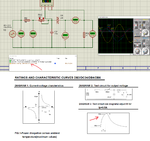Easy peasy
Advanced Member level 6

A diac is in fact a triac, with internal resistors such that it breaks down to a volt or so ( as long as there is sufficient current to keep it on ) once the off state firing voltage is reached














